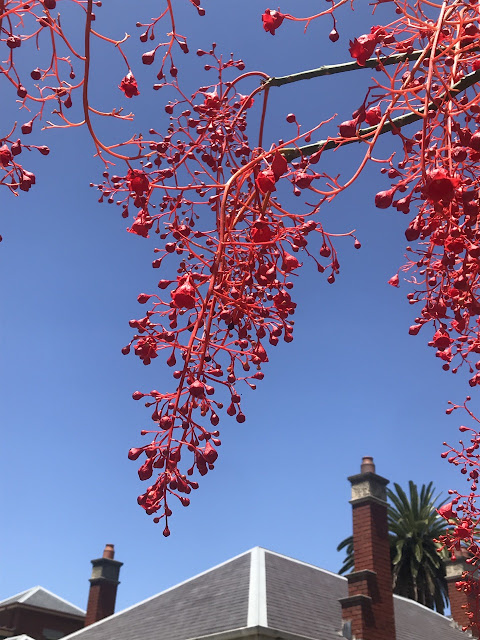January is a splendid time for some of the more spectacular Australian native flowering trees. Three weeks ago, in my Boxing Day post, I included images of Grevillea Robusta in the Royal Botanic Garden Melbourne and last week Bursaria spinosa, from our own garden and nearby.
This week, when we were in Melbourne, Laurie pointed out to me a row of Brachychiton acerifolius, that have been planted as street trees near the National Gallery of Victoria. Above are the eye catching red panicles, the stems of which are also bright red. This attribute intensifies the dramatic appearance of the leafless tree when it is flowering profusely.
This, yet to flower, Brachychiton is in our garden. It is easy to see the deeply divided leaves, that give it the name acerifolius (maple-leafed), showing clearly in this photo.
The next spectacular large shrub is a Banksia Praemorsa. This is a native of the south coast of Western Australia which is tolerant of salty winds. I was interested to learn that all the naturally occurring populations are within 2km of the coast. This particular example is growing in the garden of my ikebana friend Rosemary and her husband, whom we visited on Wednesday.
* * * * *
Now from plants to ikebana. Earlier in the week we had a guest visit and I decided that I really needed to refresh the small ikebana in the niche in the living room.
This first one is a "simplified ikebana" being reduced to a single Banksia flower and a short stem of leaves. Its colour harmonises well with the earthy tones of the vessel made by Janet Keefe in Ontario, Canada.







No comments:
Post a Comment